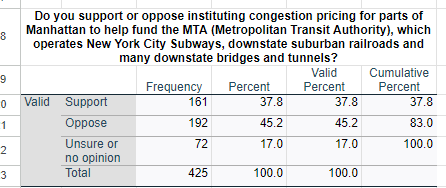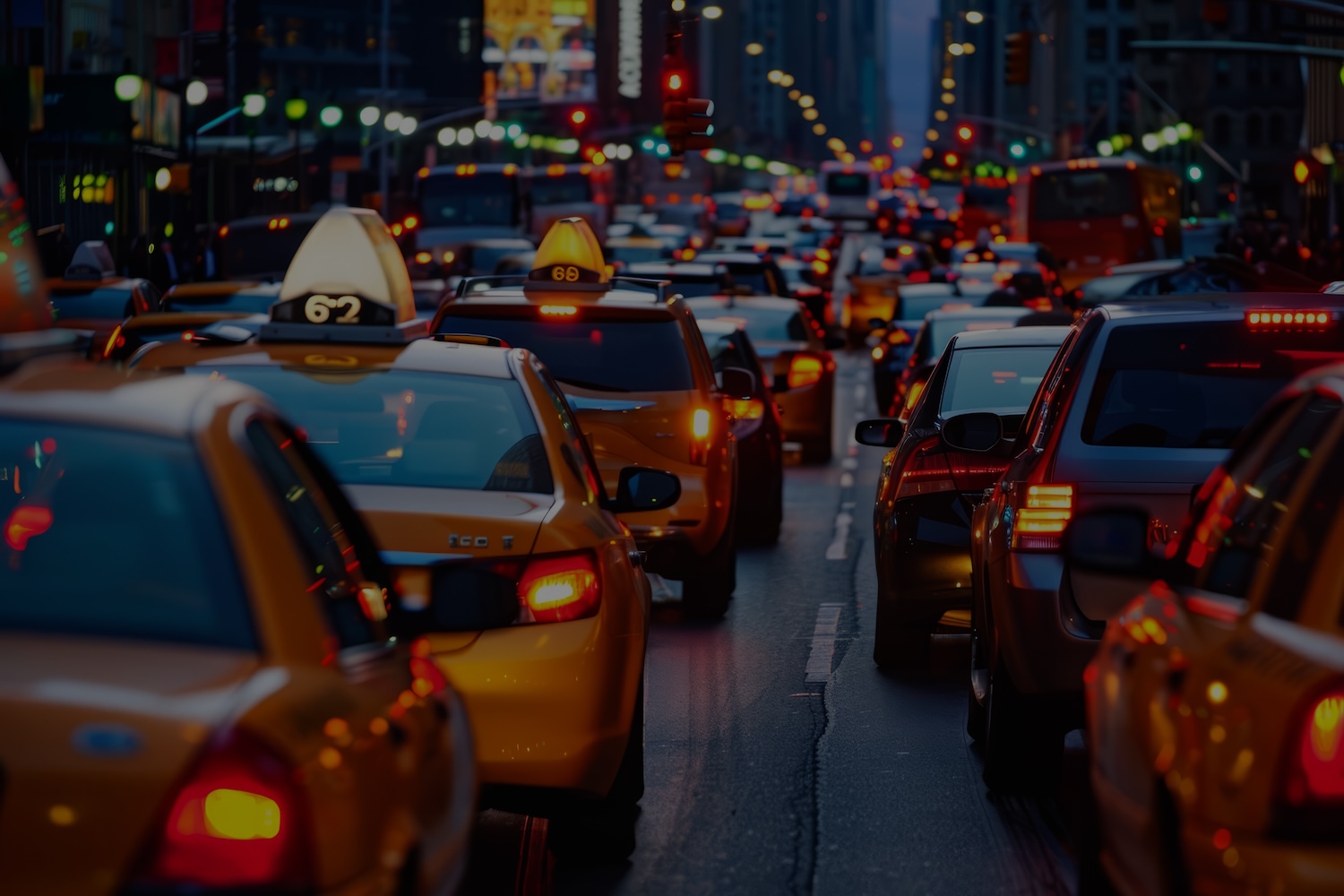Governor Hochul’s last-second announcement on June 5th, 2024, to pause New York’s Congestion Pricing Plan caused understandable dismay and even outrage from supporters of mass transit in the region, while the decision was hailed by leaders in the New York City suburbs and even some in the City’s boroughs outside of Manhattan.
There are two central facts underlying the decision, one stated, the other unstated.
The consequences are major either way.
The first fact affects mass transit. The $1 billion in annual revenue from the $15 charge for vehicles to enter the Manhattan Central Business district was intended to be the security for issuing $15 billion worth of bonds to fund the MTA Capital Program. The loss of that $15 billion opens a potentially damaging hole in the MTA’s $ 51 billion 2020-2024 Capital Program , involving major investments in the region’s subways, buses, and commuter rail systems. Unless the pause can get back on track next year, or substitute revenue found, the loss of one third of the funds to sustain the backbone of human mobility around the metropolitan area, the mass transit system, could seriously compromise the region’s future.
The second central fact involves the fall elections. Although the Governor’s articulated rationale for halting the change was economic – that the $15 charge is too burdensome for ordinary New Yorkers and could hurt the economic recovery of the metropolitan area in the post-pandemic area – the Governor did not mention the political elephant in the room: the Democratic Party’s chances of winning back the House of Representatives in Congress after the loss of four Democratic House seats in the New York City suburbs in the 2022 midterm elections. This was a major factor in the Democrats’ losing control of the House that year by five seats. (The margin is now four thanks to the Dems regaining the Third Congressional district, based in northern Nassau County, in a special election this winter after the ludicrous George Santos was expelled from Congress.)
And it’s New York City’s suburbs where opposition to the congestion pricing plan is strong.
There can be no doubt that the Republican Party’s New York campaign operatives were salivating over the political opportunity to attack the Democrats this fall over the imposition of the $15 charge to get into Manhattan, charging the Dems with glaring insensitivity to the middle and working classes of the New York metropolitan area (an attack I don’t agree with but would clearly occur).
That political attack, coming on top of the inflation spiral that has left President Biden vulnerable to defeat by Donald Trump, could be very effective, possibly even decisive. In addition to the three suburban seats still in Republican hands after 2022, a fourth seat, the 18th Congressional district in the Hudson Valley, was won by a Democrat, Pat Ryan, by only 1.3% in 2022 and he remains vulnerable too. The Democrats also have a serious chance to win a fourth additional Congressional seat in the Syracuse area now held by a Republican, where congestion pricing isn’t really an issue. (I wrote about the 2022 midterm elections in a January 2023 article.)
I was an early and staunch supporter of congestion pricing when first proposed by Mayor Michael Bloomberg in 2007, but I was already gone from the Legislature by the time it was enacted twelve years later in 2019. I began to get nervous about the plan after the Democratic party defeats in the suburbs in 2021 and 2022. I could see the handwriting on the wall when suburban legislators refused to support an addition to the payroll mobility tax in the 2023 budget to help the MTA when the Federal COVID bailout funds for the MTA were starting to expire. The increased tax ended up falling on New York City alone. Suburban legislators were thumbs down on tax hikes.
The vulnerability of the congestion charge to political attack was clear in many polls.
Here is an April 2024 Siena College Research Institute survey on many issues that included a congestion pricing question, with the three main State regions divided:

In the New York City suburbs, opposition to the congestion charge was 72%, and even in New York City itself 64% were opposed. Majorities of Democrats, Republicans, Independents, and even liberals were opposed.
Here is a November 2023 Siena College Research Institute poll of 505 Long Island registered voters that had a congestion pricing question:

73% of Long Islanders were opposed to the charge.
Here is a poll, taken of just Democrats likely to vote in the Jamaal Bowman/George Latimer Democratic primary in the 16th Congressional District (Yonkers and parts of Westchester County), from June 2024, taken by Emerson Poll :

This was a poll of Westchester County/Rockland County Democrats considered likely to vote in the primary, where a large number of voters are most probably at least somewhat liberal, but even here opposition to the congestion charge was 45%-38%. If Republicans and Independents had been included opposition would have been deeper.
Here is a very recent poll taken after Governor Hochul’s decision to pause the plan, from Siena College Research Institute:

Support for the pause was 45%-23%, with support in NYC 45%-30%, in the suburbs 56%-18%, and support 35%-19% in Upstate New York (with 29% in Upstate New York Don’t Know/Refused). Interestingly, 16% of New Yorkers offered a response in the middle, which Siena did not elaborate further on. Could it be some support for the concept with reservations about implementation? Unknown.
The polling information does support fear that congestion pricing could backfire on the Democrats in the election.
While MTA President Janno Lieber acknowledged that the 2020-2024 Capital Program will have to be reprioritized (meaning some projects cut), with an emphasis on maintaining a state of good repair , transit advocates in the region, led by the City Comptroller Brad Lander, will soon sue the MTA to force congestion pricing to proceed.
In the short term, however, congestion pricing is likely to be paused until after the election and into the next legislative session, where a reckoning must be held. It should also be noted that the existing 2020-2024 capital program is years behind schedule and probably needs to be rethought and recast going forward anyway.
Proposals to toll the four free East River bridges into Manhattan have been in existence throughout the twentieth century and in the 1950s the first proposals to use the money for mass transit were advanced.
The congestion pricing proposal advanced by Mayor Bloomberg in 2007 stalled after years of debate while I was in the Assembly. Support and opposition could be geographically mapped by distance from Manhattan and access to the subway system. I assume that has not changed.
Nonetheless, the needs of the mass transit system must ultimately prevail.
The technology to implement the program has been installed, including the 60th Street Manhattan corridor tolling system.
Could a less burdensome variation take the sting out of the $15? I agree keeping the East River bridges free makes no sense. Could the East River bridges simply be tolled the same as the Battery or the Midtown Tunnels, meaning the charge would be $10, not $15? The plan for the already tolled entries to Manhattan like the Battery Tunnel was to have an extra $10 charge; could that be reduced to $5? Could the cap of $50,000 a year income for drivers entering the city to get a tax break be increased? There are many options, and the pause should not be permanent.
Congestion pricing’s implementation before the national and state elections put a dagger to the throats of the Democrats. I hope the results are good for them this fall; after the election there will be time to figure out a congestion pricing solution.
Discover more from Jim Brennan's Commentaries
Subscribe to get the latest posts sent to your email.

That this was paused will be a substantial GOTV for the MAGAs. Killing it outright might have had less of that effect but leaving this open will pull out the NoCP votes and those who would benefit from the MTA Capital Plan are confused when not skeptical and hostile. Maybe she can pull the Legislature into session to tweak the thing and save the Party’s bacon. But I think the well has been poisoned.